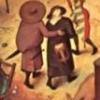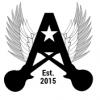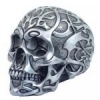-
Posts
155 -
Joined
-
Last visited
Reputation Activity
-
 MaxClass got a reaction from Graham_Charles in Text Frame Lock with Edit Capability
MaxClass got a reaction from Graham_Charles in Text Frame Lock with Edit Capability
Walt,
Thanks for your response but many times I have multiple text frames on different pages that would make putting them on individual Master Pages unreasonable to work with.
Not all my document formats use a strict Master Page regiment, although your point is well taken. I do make judicious use of Master Pages where I feel they are needed.
Just that many times a single text frame may need to be created that would interfere with the Master Page currently in use so a text frame is added onto the document page and that can not be lock into place without loosing editing capability.
Publisher is all about allowing the user flexibility to do whatever they want whenever they want anywhere they want so I still stand with my original post with the idea of being able to temporarily lock a text frame into place and still be able to fully edit it. The locking feature (icon) would be a toggle On/Off option.
—MaxClass
-
 MaxClass got a reaction from stroplog in Accurate rounded curved line
MaxClass got a reaction from stroplog in Accurate rounded curved line
Paperwallah,
Here is a process that you can use to get a perfect 1/4 circle curve with the exact radius you want. It’s a little long winded but it is still good to know.
1. Using the circle tool draw a circle of any good size holding down the shift key to keep it circular.
2. Select the “Move Tool” and highlight the circle.
3. Go to the tool bar area and select “Convert to Curves”.
4. Now grab the “Node Tool” and click on the circle to highlight it.
5. Click on the 12:00 node and select “Action: Break Curve”.
6. Repeat this process on the 3:00 node. This effectively makes the upper right quarter of the circle an independent separate arc segment.
7. Deselect the entire circle so no nodes are highlighted then click on the upper right section and you will only see two node selected.
8. With those two nodes selected and still using the node tool drag a rectangle around the entire upper right section to select both the 12:00 and the 3:00 node.
9. Now placing the node tool cursor on one the of the two highlighted nodes you can drag that section away as an individual arc without it reshaping.
Now for setting the radius you want.
1. Select the “Move Tool” and highlight the arc.
2. Look in the “Transform” area at the bottom right and notice the W: (width) and the H: (height) values.
3. Simply enter into both fields the exact radius you want and you are done.
You now have a perfect arc segment with an exact radius. You can duplicate it, flip it, rotate it or whatever you need to do.
Although this seems like a rather complicated procedure I just timed my self doing exactly the above and did it all in 26.43 seconds.
The main idea here is two fold. One to get a perfect 1/4 arc and the second to learn a little about using the “Action: Break Curve” and also to show how to move an entire object by any one node.
A nice (maybe byproduct of AD) is that once you have a path selected with the node tool you can then drag a selection rectangle completely around that path and select every node on the path at one time, without it selecting any other object, but that you can also drag it by any node without modifying the shape of the path. This lets you snap a single node to any other object.
Hope this is helpful if not long winded (something I am known for).
Max
-
 MaxClass got a reaction from walt.farrell in Text Frame Lock with Edit Capability
MaxClass got a reaction from walt.farrell in Text Frame Lock with Edit Capability
Walt,
Thanks for your response but many times I have multiple text frames on different pages that would make putting them on individual Master Pages unreasonable to work with.
Not all my document formats use a strict Master Page regiment, although your point is well taken. I do make judicious use of Master Pages where I feel they are needed.
Just that many times a single text frame may need to be created that would interfere with the Master Page currently in use so a text frame is added onto the document page and that can not be lock into place without loosing editing capability.
Publisher is all about allowing the user flexibility to do whatever they want whenever they want anywhere they want so I still stand with my original post with the idea of being able to temporarily lock a text frame into place and still be able to fully edit it. The locking feature (icon) would be a toggle On/Off option.
—MaxClass
-
 MaxClass got a reaction from chbrier in Data Merge on Master Pages
MaxClass got a reaction from chbrier in Data Merge on Master Pages
Desktop 27 inch iMac and long time user of Affinity Publisher, Photo, and Designer.
I find that “Data Merge” is one of my most used features as I do very specialized document sets for people all across America.
By accident, I found out by having a Master Page set up for some document where I needed to have certain information appear on every page of the documents depending upon the the physical location of the client based upon the Merge Data file for that client.
I was amazed to find out that Data Merge does not work when fields are entered into a Master Page. I can only imagine this is an oversight as no one had probably thought that would ever be needed, but, as it turns out it is and is something I need. Why exclude the Master Pages from merged data.
I’m sure you can make the replacement of data into Merge Fields available to Master Pages also.
Thank you in advance and looking forward to seeing this implemented.
-
 MaxClass got a reaction from Old Bruce in File Save Dialog
MaxClass got a reaction from Old Bruce in File Save Dialog
Publisher 1.10.1. The File Save Dialog used to have the name section highlighted what a Save, Save as…, Export, etc. option was selected allowing for the immediate pasting in of a preselected file name.
This option was possibly accidentally removed beginning with Publisher 1.10.
I would like to see it re-established if at all possible. As a long time Mac programmer I know this is not difficult to resurrect.
MaxClass
-
 MaxClass got a reaction from qbenguy in How can I hand draw accurately - just like in Sketchbook Pro?
MaxClass got a reaction from qbenguy in How can I hand draw accurately - just like in Sketchbook Pro?
Raskolnikov,
I just finished a full plan view with internal details, etc.in AD. I just set up the document so that the drawing size was in inches (US here) and made the drawing board slightly larger than the lot size. My scale was 1 inch = 1 foot. All my walls are rectangles. I create two wall segments to copy and use. each one is maybe 6 inches (6 feet) by the wall thickness I need, say, .5 inches. I set the fill to black and the stroke to none so it is accurate and set the end caps to square so that all alignments for lengths are ace upon the center lines.
I also create door icons, sliders, windows, sinks, fixtures, etc. group them and save them to a single file “Fixtures”. These I can simply open in a second file, copy and paste them and/or rotate the and drag them to where they belong. Works great.
If I need a wall segment 18.5 feet long I simply drag off a copy of either the vertical segment of the horizontal segment and while it is selected I enter the exact length I need it to be in the Transform field depending on whether or not I am using the vertical or horizontal segment and i have the wall segment I need in exactly the length I need it.
To measure any wall simply click on it and the transform area shows you the exact size in W: and H:.
If you use metrics just create the drawing document in millimeters ( my preference) and do the exact same thing. Now the accuracy is easily 1/10 of a millimeter.
Max
P.S. Here is my house done in Affinity Designer format.
MyHouse.afdesign
-
 MaxClass got a reaction from OldGoat in Adding Vinyl Cut Line
MaxClass got a reaction from OldGoat in Adding Vinyl Cut Line
As the author of the vinyl cutting Mac application of the past (“SignPost”) you will need to create a path that the vinyl cutter can follow to do the job.
Since vinyl cutters are only interested in a path cut with a knife the stroke width you use is irrelevant so anything will do. Using a 1 point stroke is fine so you can see where it is.
Not sure what format you will need to save the path information in but I imagine PDF should work fine.
Max
-
 MaxClass got a reaction from austint30 in Affinity for Linux
MaxClass got a reaction from austint30 in Affinity for Linux
As an X-Plane user and a Mac developer I have to take my hat off to “Austin Meyer”, the author of X-Plane for one major aspect. I do not know exactly what development environment he uses but the program is absolutely massive. My upgrade last night included over 41,000 files. To top that off X-Plane runs exactly the same on OS X, Windows and Linux.
I have no idea how he does it but I think he must have developed his own, entirely proprietary GUI that does not depend on any specific platform. All I know is it is one phenomenal piece of software and it works as advertised across three different platforms. The man is a genius in every sense. Sort of like the Affinity Team.
Max
-
 MaxClass got a reaction from Robsart1 in Adding Vinyl Cut Line
MaxClass got a reaction from Robsart1 in Adding Vinyl Cut Line
As the author of the vinyl cutting Mac application of the past (“SignPost”) you will need to create a path that the vinyl cutter can follow to do the job.
Since vinyl cutters are only interested in a path cut with a knife the stroke width you use is irrelevant so anything will do. Using a 1 point stroke is fine so you can see where it is.
Not sure what format you will need to save the path information in but I imagine PDF should work fine.
Max
-
 MaxClass got a reaction from Clara Montseny in Applying round corners to a box?
MaxClass got a reaction from Clara Montseny in Applying round corners to a box?
Omegaman,
I have run into the need for doing this too on occasions. What I do is to simply get the rounded rectangle tool, create a rectangle directly over the box then select the node tool and modify the corners to what you need. Then delete the original rectangle (box).
You can also select the original and view under “Transforms” the exact size and create a rounded rectangle the same size by actually entering in the exact same values for Height and Width. (The Team fix the crashing problem with accidental negative values.)
I especially like the ability you have with rounded rectangles to first modify the corners all at once to maintain exactness of all corners then uncheck “Single Radius” and adjust any other corner at will even to making the square if needed.
You may already know how to do this but some others may read this and gain from this description. This whole thing only takes a few seconds in the overall picture.
Max
-
 MaxClass got a reaction from JimmyJack in delete point
MaxClass got a reaction from JimmyJack in delete point
The problem, as I see it is, exactly what action do you want to happen when you click on a node. Here are some possibilities.
1. Select that node only. (Node Tool) 2. Delete that node from the path segments and leave the remaining path in tack. (Node Tool + command)
3. Cut the path at that node. (Node Tool + option)
4. Cut the path at that node and delete both line segments attached to it. (Node Tool + control)
5. Clicking on the line/curve of any selected path will also add a node at that point.
6. Click and drag on a curve segment to adjust it’s curvature.
7. Click and drag on a straight line segment to convert it into a curve and adjust it’s curvature.
Based upon the above I can see a real need for items 2…4 (at minimum) so how does the program determine exactly which action you want without some kind of user input. These actions listed above in parenthesis could be one solution that would allow all three actions to be invoked with only one selection of the node tool. Obviously the cursor might have to change with each key to reflect the action that will take place when a node is click on.
I think this could use some insight from many users at to possible solutions that would seem intuitive. The need here seems to be; what action is going to take place when I click on this node?
Just my thoughts here.
Max
-
 MaxClass got a reaction from peter in Affinity for Linux
MaxClass got a reaction from peter in Affinity for Linux
As an X-Plane user and a Mac developer I have to take my hat off to “Austin Meyer”, the author of X-Plane for one major aspect. I do not know exactly what development environment he uses but the program is absolutely massive. My upgrade last night included over 41,000 files. To top that off X-Plane runs exactly the same on OS X, Windows and Linux.
I have no idea how he does it but I think he must have developed his own, entirely proprietary GUI that does not depend on any specific platform. All I know is it is one phenomenal piece of software and it works as advertised across three different platforms. The man is a genius in every sense. Sort of like the Affinity Team.
Max
-
 MaxClass got a reaction from nikhiljangala in Snapping handles to 45° (or custom angle)
MaxClass got a reaction from nikhiljangala in Snapping handles to 45° (or custom angle)
Alphons,
Being an Illustrator user since 1987 v1.0 I can say that almost without exception Bezier handles hardly ever need to be anything other than vertical or horizontal. Doing otherwise will alway give you a bounding box that is larger than the curve(s) you are drawing.
In addition, all top notch font designers never create handles that extend beyond the extents of the graphic. A bounding box for any glyph will never extend beyond any part of the character. In teaching many many users how to handle this type of drawing the best examples are to take any fancy font, convert any character into outlines and then study where the font designers place their Bezier handles on all curves. Almost all will be place at the 12, 3, 6 or 9 o’clock positions and will always be either vertical or horizontal. Obviously there will be some exceptions. Another example is to simple draw an “Oval” or “Rounded Rectangle” and look at the placement of the Bezier handles that AD put there.
Max
-
 MaxClass got a reaction from ccraig in Create text outlines?
MaxClass got a reaction from ccraig in Create text outlines?
Create Text Outlines
Back in 1988, after successfully being able to send AI line drawings directly to Pen Plotters I quickly found out that I could not print the outlines of fonts. After a call to my friend (Jim Von Erh of Fontographer fame) he sent me the information I needed to reverse engineer the system type 3 founts created with Fontographer back into their original outlines and shortly thereafter I created a program called “FontLiner” which was the first of its kind to decode all the characters of any type 3 font back into their outlines in an Illustrator file format. This was the first time graphic designers had access to the outlines of fonts.
Several months later I got a call from Adobe Systems that the owner, John Warnock, wanted to talk to me. Since I lived in the area at the time I agreed to meet with him personally. He was deathly afraid that I had also cracked the encryption of Adobe’s Type 1 fonts which they considered a very big trade secret and was about to hand the whole world their outlines too. I told him I was not at liberty to say whether or not I had. They were very worried though. Their font sales had fallen off because designers would not buy new fonts they could not get the outlines to using “FontLiner” or Illustrator. The toothpaste was out of the tube once designers were able to get hold of outlines. On the plus side I could now plot out any font characters.
Needless to say the next version of Illustrator (Version 3.0) came out with the new “Create Outlines” option under the Font menu and the rest was history along with my program but it turned out best for all designers from that point on. Designers around the world would groan now without that option.
Meanwhile my plotting program turned into “SighPost” which became the first and most popular program for the Mac for Vinyl Sign Cutting companies at the time.
Just a little history on the beginnings of access to font outlines with the help of Jim Von Erh from back in 1988.
Max
-
 MaxClass got a reaction from claretnblue in Adding Vinyl Cut Line
MaxClass got a reaction from claretnblue in Adding Vinyl Cut Line
As the author of the vinyl cutting Mac application of the past (“SignPost”) you will need to create a path that the vinyl cutter can follow to do the job.
Since vinyl cutters are only interested in a path cut with a knife the stroke width you use is irrelevant so anything will do. Using a 1 point stroke is fine so you can see where it is.
Not sure what format you will need to save the path information in but I imagine PDF should work fine.
Max
-
 MaxClass got a reaction from ronniemcbride in How can I hand draw accurately - just like in Sketchbook Pro?
MaxClass got a reaction from ronniemcbride in How can I hand draw accurately - just like in Sketchbook Pro?
MickM,
Sorry that did not solve your problem.
Sounds like the best tool for the job is on the other end of the eraser on a pencil and the back of a Denny’s placemat. Wound’t be the first invention or design that started that way. Once you have what you want the hit it with AD.
Max
-
 MaxClass got a reaction from CartoonMike in Where's the demo?
MaxClass got a reaction from CartoonMike in Where's the demo?
Hey guys,
Pay their ridiculously low price from the App Store and you can have it today. Listen to the forum post and you will not hear any complaints, only some features that the team is currently working on for the next release.
Just do it. You will not regret it.
Max
-
 MaxClass got a reaction from CartoonMike in New User Help Please...
MaxClass got a reaction from CartoonMike in New User Help Please...
Darren,
Alternatively, once you have duplicated any object you can also go to the “Transform” fields at the lower rights of the window and type in an exact rotational value in the field following “R: ”. This will allow you to rotate any object to the exact rotational amount you would like.
Max
-
 MaxClass got a reaction from Darren in New User Help Please...
MaxClass got a reaction from Darren in New User Help Please...
Darren,
Alternatively, once you have duplicated any object you can also go to the “Transform” fields at the lower rights of the window and type in an exact rotational value in the field following “R: ”. This will allow you to rotate any object to the exact rotational amount you would like.
Max
-
 MaxClass got a reaction from peter in Draw object as vector (as default)
MaxClass got a reaction from peter in Draw object as vector (as default)
How about this thought!
Only one rectangle tool, but, if before dragging it to shape the “option” key is depressed then it becomes a rounded rectangle instead. Two birds, one stone.
This would eliminate the need for a rounded rectangle tool plus provide for both in the same tool. Regular rectangles in the regular way. Option-drag and you get the “option” of a rounded rectangle with its specific capabilities.
How simple is that. Using the “Option” key give you the optional results.
Max
-
 MaxClass got a reaction from JGD in Node Tool Actions
MaxClass got a reaction from JGD in Node Tool Actions
Beta: 1.0.19046
The node tool now allows going from curve segments to straight line segments by option-clicking on the last curve point and clicking for the next line segment.
Works beautifully and intuitively. Thanks guys.
Max
-
 MaxClass got a reaction from JGD in Node Tool Actions
MaxClass got a reaction from JGD in Node Tool Actions
Thanks for the feedback guys.
I think your approach of not particularly using Illustrator as a guide is good. In the end Illustrator will have to probably follow your lead. Maybe someday Illustrator will be on the leading edge of your trailing edge trying to catch up with you.
I also do not necessarily disagree with your logic here. My main problem was that of accidentally converting a straight line segment into a curve segment accidentally but also knowing that will happen should probably prevent you from doing it twice.
I do like the fact that when using the node tool you can select a path, then drag a selection rectangle around all the nodes to highlight them then move the entire object placing the cursor on one of the nodes using snap to position the object using one node over a node on another path. This allows you to snap one particular node to a node of another object by moving the entire object by a node.
I also made another post under “Feature Request” regarding using the “Node Tool” with the “option” key to change it to a “cut” tool which should be pretty intuitive when a small “x” appears under the node toll.
Just something to think about.
Suggestion:
Also noticed that the “Action: Close Curve” is also used to close the end points of any path even if they are straight line segments. This was not readily apparent because of the way it is worded until I tried it. Possibly consider renaming this to “Action: Close Path” which is more intuitive, covers both bases and says exactly what it really does.
Thanks for listening.
Max
-
 MaxClass got a reaction from JGD in Node Tool Actions
MaxClass got a reaction from JGD in Node Tool Actions
Node Tool Actions:
Discoveries in Moving and/or Aligning Entire Objects using the Node Tool
To select all of the nodes on any given object/path you must first click on either any part of the path or any node of the object to highlight all of the individual nodes on the object. Then you can drag a selection rectangle around every node to select all of them or individually do a “shift-click” on every node to individually select them all or just the one you chose.
Once this is done you may then drag the object and/or the selected nodes by placing the cursor directly over any selected node and drag the object/nodes to a new location all at once
You can also use this technique with the “Snap” option turned on to directly ‘snap” any given node of one object to any given node of another without distorting the original object.
If the object/path you are trying to move as a whole with the cursor on any given node is overlapping another object the selection rectangle drawn by the “Node Tool” will only select the nodes on the selected object and not those of the underlying object. This is a big plus.
Downside?
Using the above method to move and snap an object/path without distorting the original only works if you move the object with the node tool directly over a node.
If you accidentally happen to place the cursor over ANY line or curve segment and not directly over a node while trying to move the object (regardless of how many nodes you have selected) two things will happen.
1. If the cursor is on a curve segment it will modify the curve.
2. If the cursor is on a straight line segment it will convert it into a curve segment (immediatelyi use “command-z” to undo that action).
Both of these options is an undesirable side effect that will unintentionally modify the object when your initial intent is to only move it in tact or just the selected nodes.
Obviously this is an unintended consequence but something you should be completely aware of. I have one suggestion as to how to handle the accidental modification of a path at this point that might work.
Possible Solution:
If two or more nodes on a path are currently selected then DO NOT allow the tool to modify individual line or curve segments as this node selection would be a indication that the user is only interested in moving the individually selected nodes and not modifying any of the segments.
Hope these discoveries are of help to all.
Max
-
 MaxClass got a reaction from peter in Outside the canvas
MaxClass got a reaction from peter in Outside the canvas
Raskolnikov,
I also light the black background when programming as it is not like having high beams in your face all the time but like I mentioned above using the option they gave us to modify or lighten it does help to find misplaced items. You can also use the “command-a” (select all) option too. If there are any misplaced items off screen they will show up as the bounding box for all objects will also be off screen letting you know something is out there. I especially like using a bright green text against a black background too because it is high contrast but not glaring and very visible. Would like to see something like a possible color other that white against the black in AD around the screen or maybe make that a personal option so “to each his own”. Sometimes the white against the black background is hard to read. We’re not all teenagers, right?
Maybe a nice red to match your hair. Mine would have to be grey if I went with hair color.
Max
-
 MaxClass got a reaction from 000 in Thumbnails, How to Post them
MaxClass got a reaction from 000 in Thumbnails, How to Post them
Misspelling on my part. It should have been “Grab” which is a standard Mac application in “Utilities” for doing scene captures.
Thanks for you explanations. That should possible clear things up of others too.
Max












